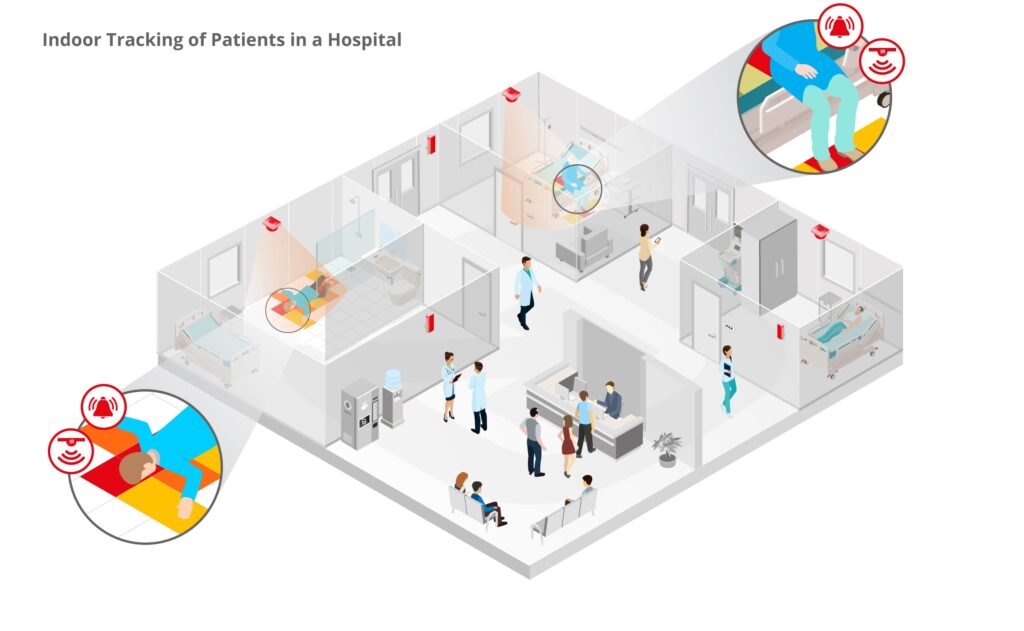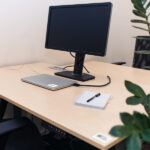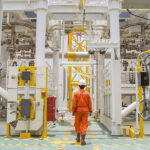Using an indoor positioning system (IPS) and condition sensors, hospital staff can check whether bedridden patients are getting out of their sleeping position and leaving bed. In addition, the system offers the possibility of detecting a patient’s fall and intervening immediately.
AT A GLANCE
- automatic position transmission to a nurse in the immediate vicinity
- automatic alarm when not allowed to get up from bed
PROBLEM DEFINITION
In a hospital, safety plays an important role for patients. Due to the patients’ state of health, accidents can occur in many everyday situations that endanger the life of the patient. Up to now, patients have only been able to make themselves noticed via emergency call switches or calls for help. In an emergency, both options may be difficult or impossible for the patient to access, so that the emergency situation is quickly discovered by chance.
Another problem is bedridden patients who get out of bed prematurely and without permission and endanger your health. There is a risk of heart failure, hypotension or circulatory collapse. In this case, too, nurses must be informed quickly and reliably.
SOLUTION
Infrared (IR) sensors are installed on the ceiling of each room to protect patients. They scan the surroundings and in the event of a fall, an alarm is triggered so that the nearest nurse can come to the patient’s assistance. The detection of a fall is based on the thermal image of the person to be monitored and its geodata. The combination with Beacon wristbands, which are equipped with acceleration sensors, also works and increases recognition reliability.
In the case of bedridden patients, the system can also detect from the thermal image whether the patient is standing up. In this case, an immediate message is triggered.
TECHNICAL IMPLEMENTATION
In the presented solution, the thermal image is recorded by infrared (IR) thermopile sensors. These measure the surface temperatures of objects and create a grid-like environmental sketch. If the patient wants to get up and is already in a vertical position on the bed frame, the IR sensor reacts to the change in the grid-like environmental sketch and sends a signal to the nearest infsoft Locator Node, which in turn transmits the signal to the Automation Engine.
The same applies to the detection of a fall. The room is illuminated by several IR sensors, whose areas are linked with different logics and derived actions. The data packets are sent from the sensor to the infsoft Locator Nodes via Bluetooth Low Energy. The status information is provided with conditions in the Automation Engine and forwarded to the reporting systems, which then inform the personnel. Existing alarm systems can continue to be used and are thus brought up to the latest technical standard.







